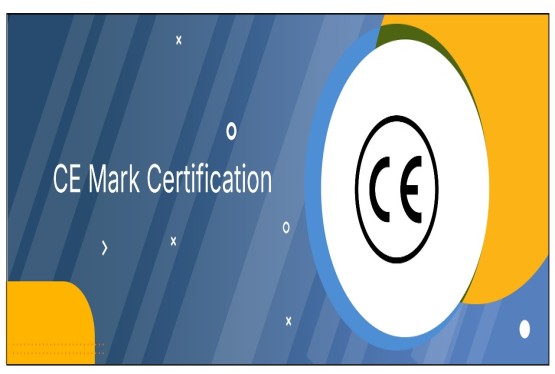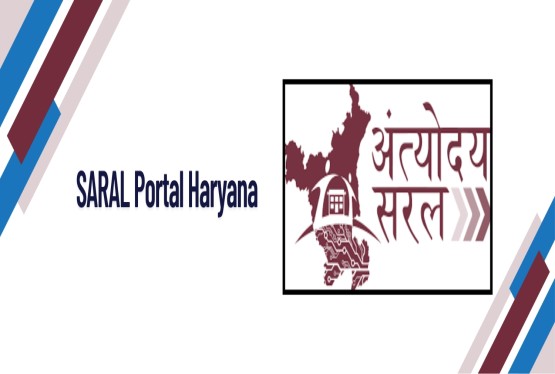KreditBee is a Bengaluru-based consumer lending startup founded in 2016 by Madhusudan Ekambaram, Vivek Veda, and Karthikeyan Krishnaswamy. It offers personal loans and credit solutions through its registered Non-Banking Financial Company (NBFC) named Krazybee Services Private Limited. Over the years, KreditBee has gained popularity for providing digital loans to young professionals and salaried individuals, leveraging technology for fast disbursals and credit assessments.
Transition into a Public Limited Company
According to a report by The Economic Times, KreditBee's board of directors approved a special resolution on June 27, 2025, to convert the public company into a private limited company. This decision is a strategic step toward launching an Initial Public Offering (IPO). Becoming a public limited company is a regulatory prerequisite for any Indian firm that wishes to list on stock exchanges like BSE or NSE. It signifies increased transparency, wider investor participation, and adherence to stricter compliance norms under the Companies Act, 2013 and SEBI (Listing Obligations and Disclosure Requirements) Regulations, 2015.
Public Limited Company (PLC)
A Public Limited Company (PLC) is a type of corporate entity that is allowed to raise capital from the general public by issuing shares, which can be traded on recognized stock exchanges like the NSE or BSE in India. It operates under the regulatory framework of the Companies Act, 2013 and is subject to more stringent compliance norms compared to private limited companies.
Being a PLC signifies that the company has opened its ownership to the public, allowing greater access to capital markets while also accepting the responsibilities that come with transparency, corporate governance, and stakeholder accountability.
Key Legal Requirements for a Public Limited Company
A company must fulfil the following minimum legal conditions to qualify as a public limited company:
-
Minimum 7 Shareholders: Unlike a private limited company which can operate with just 2 shareholders, a public limited company must have at least 7 members or shareholders.
-
Minimum 3 Directors: A PLC must have a minimum of 3 directors, ensuring that the company has a broader base of leadership and governance.
-
No Restriction on Share Transfer: Shares of a public company are freely transferable, allowing public trading and easy entry or exit for investors.
-
High Transparency and Disclosure Standards: PLCs are required to disclose their financials, shareholding patterns, related party transactions, director reports, and risk management policies through filings with regulatory authorities like the Registrar of Companies (RoC) and SEBI, especially once they are listed.
To learn more about difference between public and private company.
Statutory and Regulatory Compliance Obligations
A public limited company is subject to several mandatory compliance requirements, including:
-
Statutory Audit: Every public company must conduct an annual audit by a chartered accountant to ensure that financial records present a true and fair view of the company’s financial health.
-
Annual Filings: Companies are required to file financial statements (Form AOC-4), annual returns (Form MGT-7), and board resolutions (Form MGT-14) annually with the RoC.
-
Prospectus Filing: If the company wants to raise funds from the public, it must file a prospectus (or DRHP in case of an IPO) with the Securities and Exchange Board of India (SEBI) and stock exchanges, disclosing all material facts about the company, financials, and risk factors.
To know more about SME IPO.
Conversion from Private Limited to Public Limited Company
Many startups and private businesses choose to convert into a public limited company as a strategic step toward fundraising, IPO preparation, or expanding investor participation. Public companies enjoy greater access to funds, credibility, and market visibility but must adhere to higher compliance and transparency obligations
Steps to Convert into a Public Limited Company
To change its legal status, a private limited company must follow a prescribed procedure under the Companies Act, 2013:
-
Board Meeting & Shareholder Approval: The company’s Board of Directors must first pass a resolution approving the conversion and calling for an Extraordinary General Meeting (EGM). At the EGM, shareholders must approve the conversion through a Special Resolution, which requires at least 75% majority votes.
-
Amendment of Constitutional Documents: The company’s MoA and AoA must be altered to reflect the change in name and remove restrictions applicable to private companies, such as limits on the number of shareholders and share transfer provisions.
-
Filing with the RoC: The company must file the following forms with the Registrar of Companies (RoC):
-
Form MGT-14 – for filing the special resolution passed at the shareholders’ meeting.
-
Form INC-27 – for giving effect to the conversion and updating the company status to ‘Public’.
-
Approval and Certificate of Incorporation: Once the RoC verifies the documents and is satisfied with the compliance, it will issue a new Certificate of Incorporation reflecting the new status of the company as a public limited company.
Post-Conversion Responsibilities
After conversion, the company must ensure:
-
Appointment of the required number of directors and independent directors (if planning for a listing).
-
Issuance of share certificates in compliance with the Companies Act and rules.
-
Filing updated records with stock exchanges (if already listed or planning to list).
-
Preparation for IPO in terms of corporate governance, internal audits, and investor relations.
Merger of Finnovation into Krazybee Services: What It Means and Why It Matters
On July 5, 2025, the Reserve Bank of India (RBI) granted KreditBee the approval to merge its technology platform company, Finnovation Tech Solutions, into its lending arm, Krazybee Services, which is a registered Non-Banking Financial Company (NBFC). This move is a critical strategic and regulatory step in KreditBee’s journey toward becoming a public company and eventually launching an Initial Public Offering (IPO).
What is Finnovation Tech Solutions?
Finnovation Tech Solutions is the technology backbone of KreditBee. It is responsible for building and maintaining the mobile app, data infrastructure, credit scoring algorithms, customer onboarding systems, and digital loan processing tools that power KreditBee's online lending services.
What is Krazybee Services?
Krazybee Services is the NBFC arm of KreditBee, officially registered and regulated by the Reserve Bank of India. This is the legal entity that actually disburses loans, collects repayments, and is responsible for complying with financial regulations, capital adequacy norms, and NBFC governance frameworks.
Why Merge the Two Entities?
Simplifying the Corporate Structure
By merging Finnovation into Krazybee, KreditBee is simplifying its group structure. Instead of operating through multiple legal entities, all business functions including technology, lending, compliance, and operations will now come under one roof. This makes internal coordination smoother and reduces regulatory and reporting complexities.
Strengthening Governance and Risk Management
Having a single entity makes it easier to implement a centralized compliance and governance framework. The RBI and investors prefer such structures because they ensure that risk controls, data protection, grievance redressal, and internal audits are managed consistently across the organization. It also helps avoid related-party transactions and conflict of interest, which are common concerns in group companies.
Creating a Cleaner Structure for IPO
For any company planning to launch an IPO, having a clean, consolidated corporate structure is essential. Investors and regulators want clarity on which entity is generating revenue, holding liabilities, owning intellectual property, and controlling customer data. If Finnovation remained separate, it might raise questions like:
-
Who owns the tech IP?
-
Who controls customer data?
-
Who will be the listed entity?
By bringing all assets and operations under Krazybee Services, KreditBee ensures a transparent and investor-friendly structure.
Complying with RBI’s Digital Lending and NBFC Guidelines
In recent years, the RBI has tightened regulations on digital lending platforms and NBFCs, especially after concerns over predatory lending, data misuse, and lack of operational transparency. Some of the RBI's key expectations include:
-
Operational control of digital lending must lie with the regulated NBFC.
-
Ownership of loan data and agreements should reside with the NBFC, not with a third-party tech company.
-
Tech platforms should not act as shadow lenders.
By merging Finnovation into Krazybee, KreditBee aligns itself with RBI’s expectations, showing that its tech operations are an integrated part of its regulated NBFC business.
IPO and Funding History
KreditBee’s board decision follows its extended Series D funding round, where it raised $9.4 million, taking the total fundraise under Series D to around $209 million, valuing the company at approximately $700 million.
The company is now preparing to tap into the public equity markets an attractive move in India’s current booming IPO environment. Companies including Wakefit, Meesho, Curefoods, and Aye Finance are also in various stages of public market entry.
IPO Trends Among NBFCs and Startups
In recent months, there has been a growing trend among NBFCs and tech-driven financial firms to pursue IPOs. For example:
-
Aye Finance, which caters to MSMEs, got SEBI's nod for a Rs.1,450 Cr IPO.
-
Avanse Financial Services, a prominent education-focused NBFC, is planning to raise Rs.3,500 Cr via IPO and recently onboarded former Bajaj FinServ COO Rakesh Bhatt as an independent director.
Other Startups Going Public
The move by KreditBee is in line with other startups converting to public entities to comply with SEBI regulations for listing. Notable recent transitions include:
-
Razorpay
-
PhonePe
-
Kissht
-
NoPaperForms
Regulatory and Legal Implications of KreditBee’s IPO Plans
As KreditBee transitions into a public limited company, the next major milestone is launching its Initial Public Offering (IPO). This process is governed by a robust legal and regulatory framework in India to protect investors and ensure market transparency. Below are the key regulatory and legal steps KreditBee must fulfill before going public:
Compliance with SEBI’s ICDR Regulations
The Securities and Exchange Board of India (SEBI) has laid down detailed norms under the Issue of Capital and Disclosure Requirements (ICDR) Regulations, 2018. These regulations govern how companies must structure and disclose information during the IPO process. KreditBee will be required to:
-
Make accurate, complete, and timely disclosures of financials, risk factors, business operations, promoter details, litigation, and legal obligations.
-
Fulfill eligibility criteria, such as net tangible assets, average pre-tax profits, and minimum post-issue capital requirements.
-
Ensure lock-in periods for promoters' shares and meet conditions for pricing, minimum public shareholding, and advertising guidelines.
These provisions are designed to ensure transparency and safeguard the interests of retail and institutional investors.
Filing of Draft Red Herring Prospectus (DRHP)
A major step in the IPO process is the preparation and filing of the Draft Red Herring Prospectus (DRHP) with SEBI. This document serves as the primary disclosure document and includes:
-
Audited financial statements of the past three years
-
Details of business operations and strategies
-
Risk factors
-
Use of IPO proceeds
-
Information about promoters, management, and shareholding
The DRHP is examined by SEBI, which may ask for clarifications or modifications. Once approved, it is released for public viewing and acts as a basis for investor decision-making. Eventually, a Red Herring Prospectus (RHP) is filed, which contains the IPO price band and final offer details.
Appointment of Merchant Bankers, Auditors, and Legal Advisors
For a successful IPO, KreditBee will need to build a professional team of intermediaries, including:
-
Merchant Bankers (Book Running Lead Managers - BRLMs): These are SEBI-registered entities responsible for preparing the DRHP, managing due diligence, regulatory filings, marketing the issue (roadshows), and ensuring compliance.
-
Auditors: Independent statutory auditors will certify the accuracy of financial data and disclosures, and conduct restated financial statements as per SEBI norms.
-
Legal Advisors: Legal teams will review all corporate and compliance matters, vet contractual obligations, ensure the company’s documentation is in order, and help draft agreements and risk disclosures.
Having a strong advisory team is important for investor confidence and for navigating the complex regulatory process.
Approvals from SEBI, Stock Exchanges, and Other Regulatory Bodies
Before launching the IPO, KreditBee must obtain:
-
SEBI approval on the DRHP and the public offer.
-
In-principal approval from stock exchanges (NSE/BSE) to list shares. The company must meet listing criteria, including paid-up capital, profit track record, and shareholding requirements.
-
ROC Approval: Upon completion of the offer, the Registrar of Companies (RoC) must register the prospectus and issue a Certificate for Commencement of Business, if applicable.
-
Any sector-specific or FEMA/RBI approvals, especially if foreign investors are participating or the company has FDI-linked conditions.
These approvals are essential to ensure regulatory clearance and establish legal readiness for listing.
Conclusion: What Lies Ahead for KreditBee?
KreditBee's decision to convert into a public limited company and merge its tech operations with its NBFC arm signals the beginning of its IPO journey. The consolidation under one entity not only aligns with RBI’s digital lending norms but also positions the company for greater operational efficiency and investor confidence.
As India's capital markets continue to attract startup listings, KreditBee’s move is a calculated step in a growing trend where fintech firms are maturing into full-fledged financial institutions ready for public investment.
FAQs
Q1. What is SEBI’s ICDR Regulation, and why is it important for KreditBee’s IPO?
Ans. SEBI’s ICDR (Issue of Capital and Disclosure Requirements) Regulations govern how companies must conduct public issues like IPOs. These regulations ensure that companies like KreditBee disclose complete, accurate, and timely information to protect investor interests and promote transparency in the capital markets.
Q2. What is a Draft Red Herring Prospectus (DRHP)?
Ans. A Draft Red Herring Prospectus (DRHP) is a preliminary disclosure document filed by a company with SEBI before launching an IPO. It contains details about the company's financials, business model, promoter background, risks, and proposed use of funds. After SEBI reviews and approves the DRHP, it is made public to inform potential investors.
Q3. Why does KreditBee need to appoint merchant bankers and other professionals for its IPO?
Ans. KreditBee must appoint merchant bankers (lead managers), auditors, and legal advisors to handle the IPO process. Merchant bankers manage regulatory filings and investor roadshows, auditors ensure accurate financial reporting, and legal advisors handle compliance, corporate law matters, and prospectus
Q4. Which approvals are required before KreditBee can launch its IPO?
Ans. Before launching the IPO, KreditBee must obtain:
-
SEBI approval on its DRHP and public issue
-
Stock exchange approvals from BSE/NSE for listing
-
Registrar of Companies (RoC) registration of the final prospectus
-
Any additional RBI/FEMA approvals, if applicable
Q5. What does listing on a stock exchange involve?
Ans. Listing involves KreditBee issuing shares to the public and getting them traded on recognized stock exchanges like BSE or NSE. To do this, the company must meet eligibility norms such as profitability, paid-up capital, and public shareholding limits, and comply with SEBI's listing and disclosure rules.
Q6. How long does the IPO regulatory process usually take?
Ans. The process from drafting the DRHP to listing can take 4–6 months, depending on the complexity of the business, response from SEBI, market conditions, and internal readiness. Regulatory review, compliance checks, and investor preparation are key steps that affect the timeline.
Q7. Can KreditBee raise funds before receiving SEBI approval?
Ans. No, KreditBee cannot raise funds from the public until SEBI approves the IPO documents, and the Red Herring Prospectus (RHP) is filed and registered with the RoC. Pre-IPO placements, however, may be possible under private placement routes before DRHP submission.
Q8. What are the post-IPO compliance responsibilities?
Ans. Once listed, KreditBee must comply with SEBI’s LODR Regulations, which include:
-
Quarterly financial disclosures
-
Shareholding pattern reports
-
Related party transaction disclosures
-
Corporate governance standards
-
Insider trading restrictions
Q9. Why is the DRHP called "Red Herring"?
Ans. The term “Red Herring” indicates that the DRHP does not contain the final offer price or issue size at the time of filing. These details are included in the final prospectus (RHP) once the issue is priced.
Q10. How does SEBI ensure investor protection during IPOs?
Ans. SEBI ensures investor protection by scrutinizing the DRHP, ensuring the company meets eligibility norms, enforcing disclosure standards, and mandating strict penalties for misstatements or non-compliance. It also provides platforms for investor complaints post-IPO.












































































_crop10_thumb.jpg)







_Rules,_2025_learn_crop10_thumb.jpg)
























































































_crop10_thumb.jpg)








 in BIS FMCS_learn_crop10_thumb.jpg)










_crop10_thumb.jpg)















_crop10_thumb.jpg)





_Code C-888_learn_crop10_thumb.jpeg)
_learn_crop10_thumb.jpg)

































































_Certificate_learn_crop10_thumb.jpg)

_Certificate_(1)_crop10_thumb.jpg)















_learn_crop10_thumb.jpg)

_crop10_thumb.jpg)


















_Scheme_learn_crop10_thumb.jpg)


_learn_crop10_thumb.jpg)









